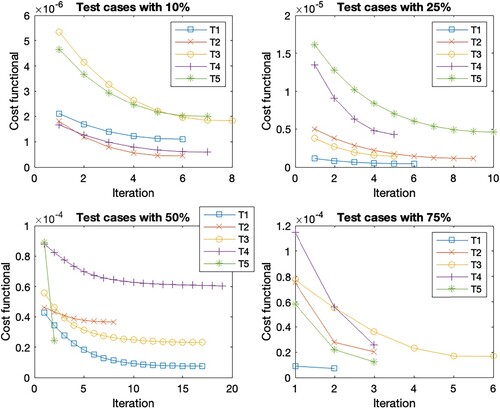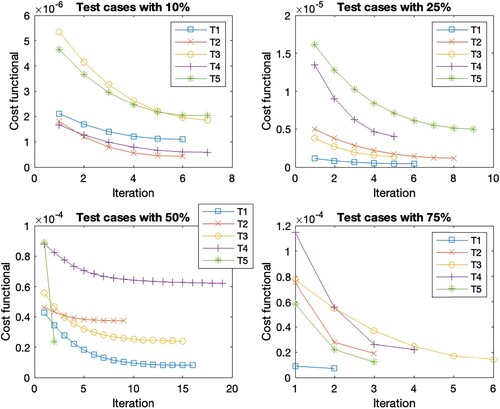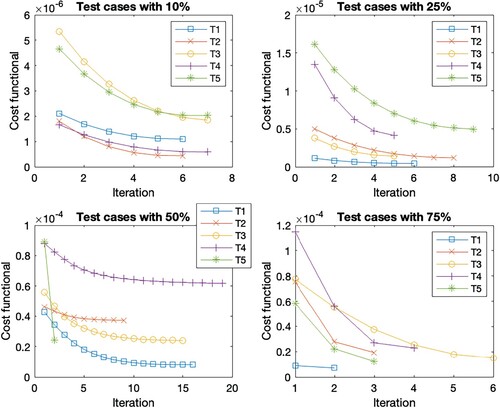Figures & data
Table 1. Five initial values sets for for the different percentages and the corresponding calibrated values for C0.
Table 2. Five initial values sets for for the different percentages and the corresponding calibrated values for C0.
Table 3. Five initial values sets for for the different percentages and the corresponding calibrated values for C0.
Table 4. Five initial values sets for for the different percentages and the corresponding calibrated values for C0.
Table 5. Relative reduction of the cost functional computed with Equation31(31)
(31) using the different test cases for
and
in the constant calibration setting.
Table 6. Different cases for calibration setting.
Figure 1. Cost functional evolution per iteration for the test cases within the constant parameter calibration.
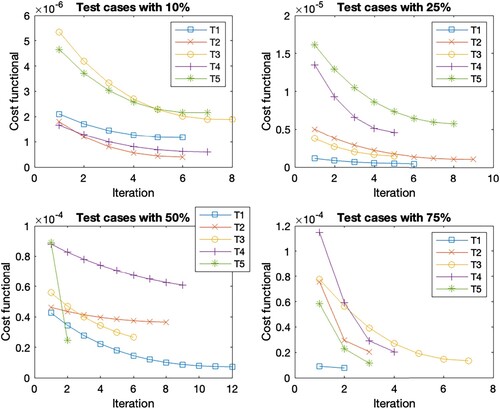
Table 7. Relative cost function reduction for the C1 calibration.
Table 8. Relative cost function reduction for the C2 calibration.
Table 9. Relative cost function reduction for the C3 calibration.
Table 10. Relative cost function reduction for the C4 calibration.
Table 11. Relative cost function reduction for the C5 calibration.
Table 12. Relative cost function reduction for the C6 calibration.
Table 13. Relative cost function reduction for the C7 calibration.
Table 14. Number of iterations for the different case scenarios for Tests 1, 3, and 5 within the percentage difference in the initial parameter set.
Table 15. Absolute difference between the largest and smallest relative cost functional reduction.
Table 16. Average cost functional reduction in percentage for the different cases over the 20 test cases, as well as a list for the corresponding relative cost functional reduction as well as the figures of the cost functional evolution.
Figure 2. Cost functional evolution per iteration for the different test set in the case scenario C1.
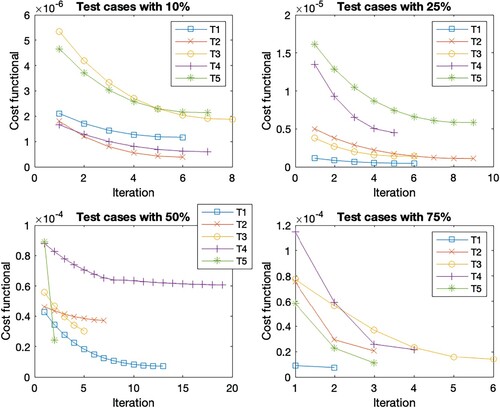
Figure 3. Cost functional evolution per iteration for the different test set in the case scenario C2.
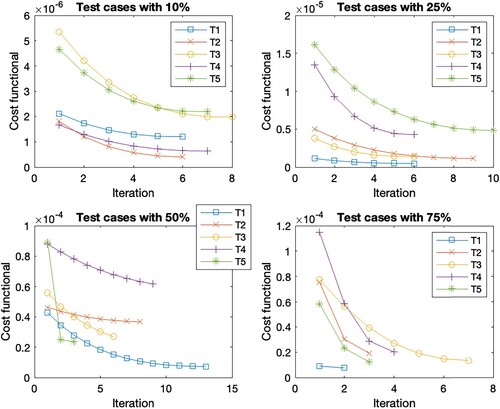
Figure 4. Cost functional evolution per iteration for the different test set in the case scenario C3.

Figure 5. Cost functional evolution per iteration for the different test set in the case scenario C4.
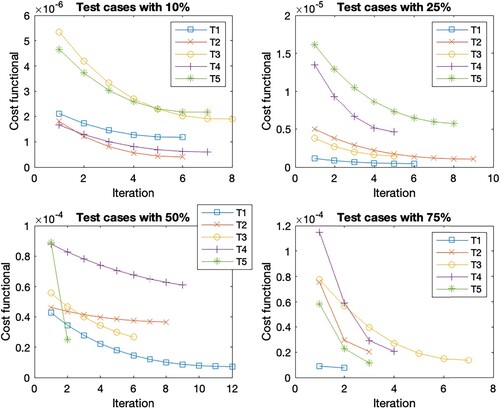
Figure 6. Cost functional evolution per iteration for the different test set in the case scenario C5.
